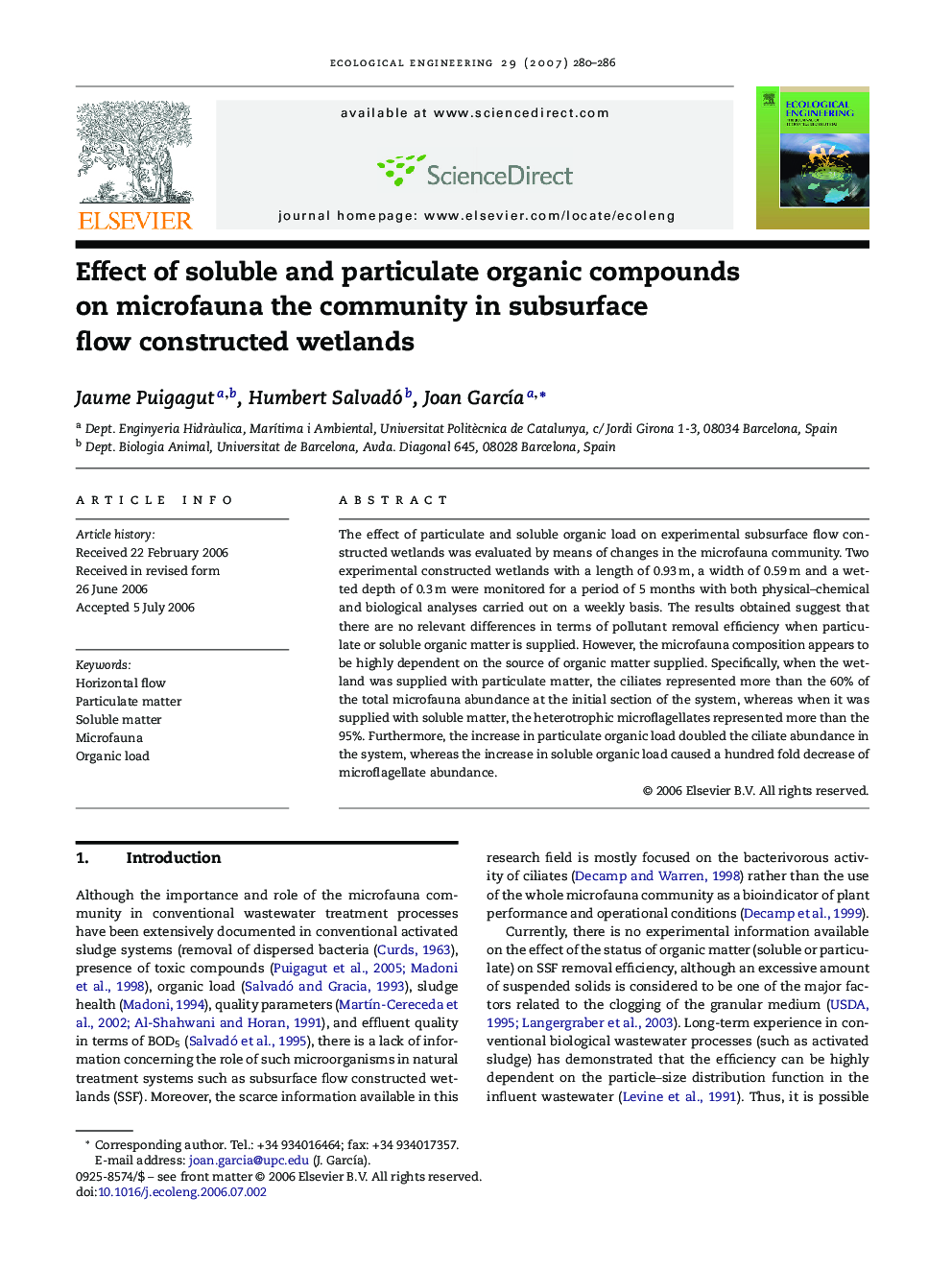| Article ID | Journal | Published Year | Pages | File Type |
|---|---|---|---|---|
| 4391207 | Ecological Engineering | 2007 | 7 Pages |
The effect of particulate and soluble organic load on experimental subsurface flow constructed wetlands was evaluated by means of changes in the microfauna community. Two experimental constructed wetlands with a length of 0.93 m, a width of 0.59 m and a wetted depth of 0.3 m were monitored for a period of 5 months with both physical–chemical and biological analyses carried out on a weekly basis. The results obtained suggest that there are no relevant differences in terms of pollutant removal efficiency when particulate or soluble organic matter is supplied. However, the microfauna composition appears to be highly dependent on the source of organic matter supplied. Specifically, when the wetland was supplied with particulate matter, the ciliates represented more than the 60% of the total microfauna abundance at the initial section of the system, whereas when it was supplied with soluble matter, the heterotrophic microflagellates represented more than the 95%. Furthermore, the increase in particulate organic load doubled the ciliate abundance in the system, whereas the increase in soluble organic load caused a hundred fold decrease of microflagellate abundance.
